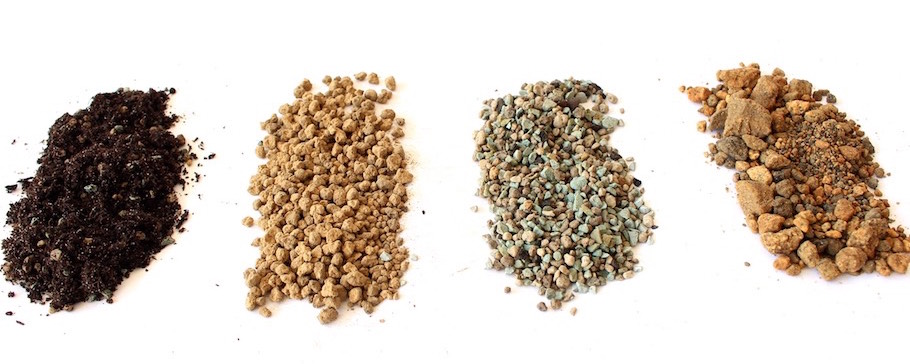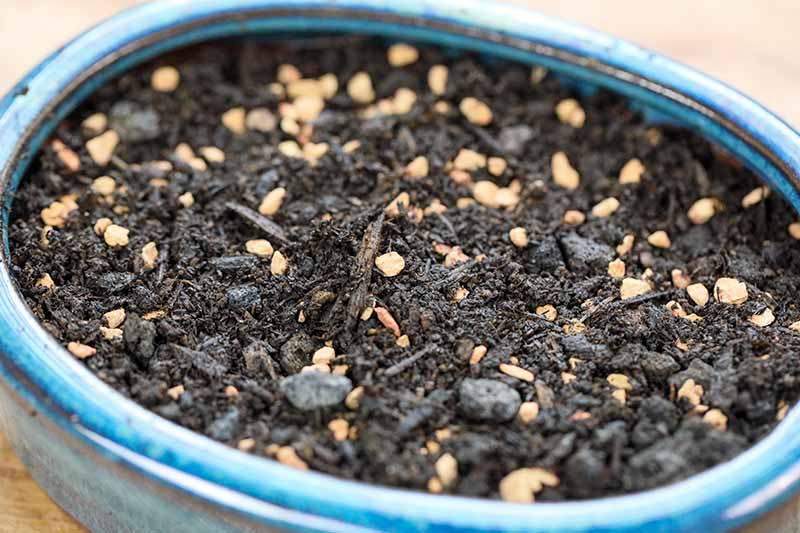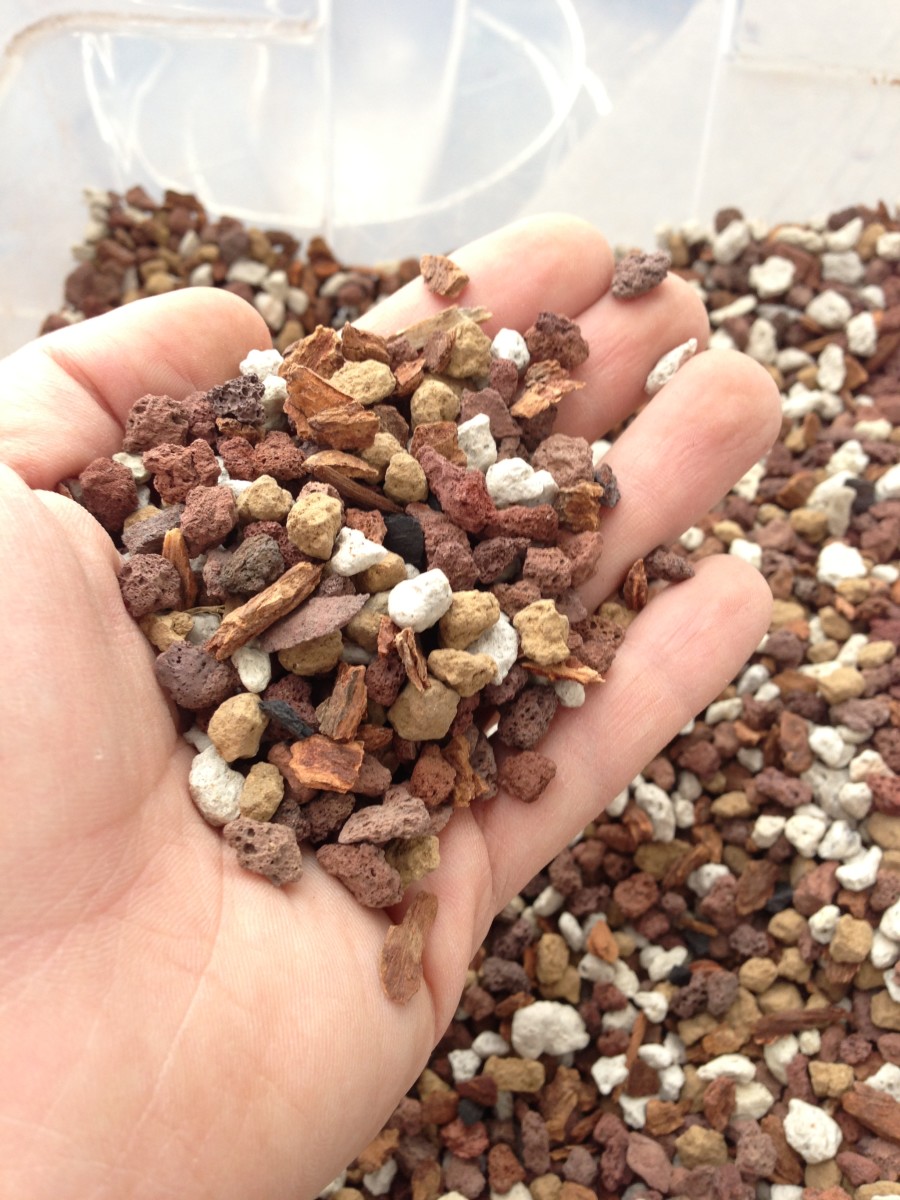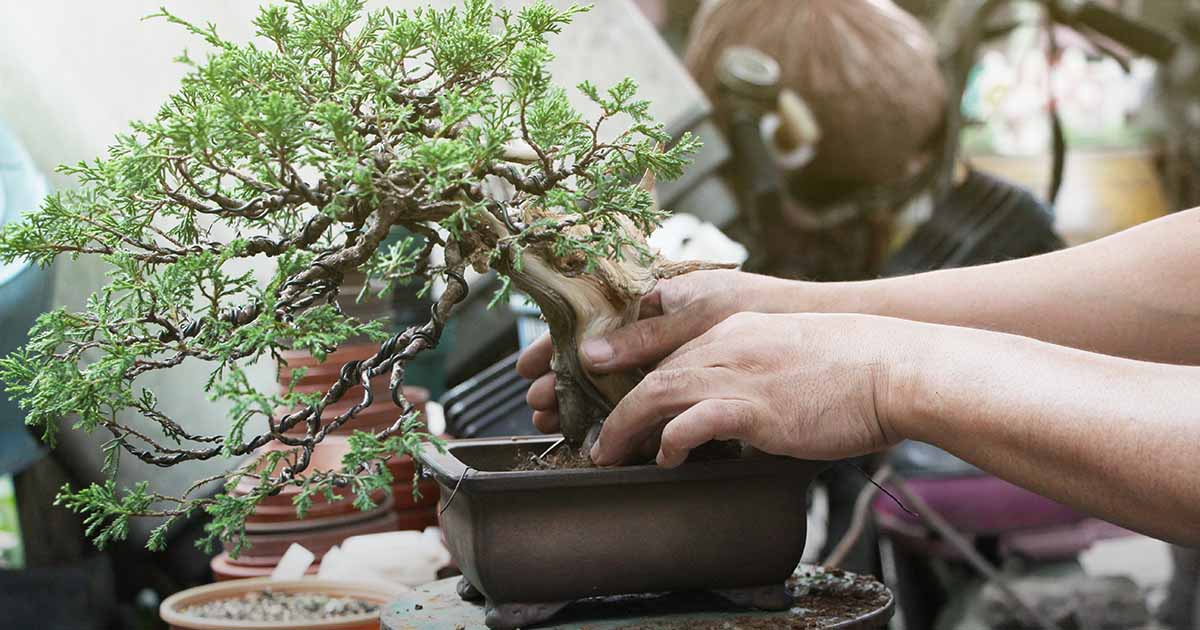In the following paragraphs, we are going to discover the different sorts of soil and substrates used in bonsai cultivation, together with organic and inorganic solutions.
We are going to also explore suggested soil mixtures for various bonsai species, like deciduous, coniferous, and indoor varieties. From akadama and pumice to moss and river sand, we will dive to the fascinating environment of bonsai soil and allow you to understand why It really is a very important Section of cultivating these exquisite trees.

Bonsai soil
What is bonsai soil?
Bonsai soil is a specialized type of soil that is specifically formulated for growing and maintaining bonsai trees. Unlike regular garden soil, bonsai soil is well-draining and provides the necessary nutrients and moisture balance for the tree's root system. The composition of bonsai soil is carefully designed to meet the unique needs of bonsai trees, ensuring their health and longevity.
The importance of bonsai soil
The choice of soil plays a crucial role in the success of your bonsai tree. The right soil provides optimal drainage, allowing excess water to flow freely and preventing root rot. It also promotes a healthy and well-developed root system, which is essential for the overall health and growth of the tree. Bonsai soil retains moisture while allowing air to reach the roots, striking the perfect balance for the tree's needs. Choosing the right bonsai soil is essential for maintaining a healthy and thriving bonsai tree.
Bonsai substrates
What are bonsai substrates?
Bonsai substrates refer to the different materials that can be used to create the ideal soil composition for bonsai trees. These substrates are carefully chosen to meet the specific needs of different species of bonsai trees and to ensure proper water drainage and nutrient availability.
Different types of bonsai substrates
There are various types of bonsai substrates available, each with its own unique characteristics and benefits. Some common bonsai substrates include:
- Organic materials: These include ingredients such as bark, peat moss, and coconut coir. Organic substrates help retain moisture and provide essential nutrients to the bonsai tree.
- Inorganic components: These incorporate parts like pumice, lava rock, and akadama. Inorganic substrates deliver fantastic drainage, guaranteeing that surplus drinking water doesn't accumulate round the roots of the bonsai tree.
- Soil amendments: They are substances which are included for the soil combination to boost its Qualities. Samples of soil amendments include things like perlite, vermiculite, and sand. They Enhance the soil's aeration, water-holding potential, and nutrient availability.
By knowing the different types of bonsai substrates and their Attributes, you could find the best suited a single on your bonsai tree's requirements.
Natural or Inorganic Soils
Organic soils for bonsai
Natural soils for bonsai are composed of purely natural materials including bark, peat moss, coconut coir, and compost. These resources offer a rich supply of nutrients for your bonsai tree and endorse healthful root development. Organic and natural soils even have superior h2o retention Houses, ensuring which the tree receives satisfactory moisture concerning watering periods. On the other hand, it is vital to notice that natural and organic soils may perhaps stop working eventually and come to be compacted, bringing about inadequate drainage and potential root troubles.
Inorganic soils for bonsai
Inorganic soils for bonsai consist of materials like pumice, lava rock, akadama, and soil amendments like perlite or vermiculite. These products have excellent drainage properties, protecting against waterlogged soil and advertising and marketing aeration round the roots. Inorganic soils are desired by a lot of bonsai enthusiasts due to their longevity and skill to provide a secure surroundings for the bonsai tree's root procedure. Nonetheless, They might require extra Regular watering and extra fertilization, as they don't keep as much dampness or nutrients as natural and organic soils.
Advantages and drawbacks of applying organic and natural and inorganic soils for bonsai
Choosing amongst organic and inorganic soils in your bonsai tree relies on different components, such as the distinct species of tree, your weather, and private Tastes. Allow me to share the positives and negatives of each:
Organic and natural soils:
- Professionals: Present nutrients, very good water retention, boost healthy root advancement.
- Downsides: May well stop working eventually, possible for very poor drainage Otherwise appropriately preserved.
Inorganic soils:
- Execs: Superb drainage, long-lasting, steady natural environment for roots.
- Cons: A lot less water retention, may possibly have to have extra frequent watering and fertilization.
By contemplating the advantages and drawbacks of both organic and natural and inorganic soils, you may make an knowledgeable final decision based on the specific requirements of your bonsai tree.
Soil elements
Crucial parts of bonsai soil
Bonsai soil is usually composed of a few major parts: grit, natural and organic make a difference, and clay. These components function with each other to produce The perfect soil construction for the bonsai tree's root technique.
- Grit: Grit, like sand or perlite, supplies drainage and aeration from the soil. It helps avert waterlogging and lets air to get to the roots.
- Natural and organic subject: Natural and organic make any difference, which include compost or bark, supplies nutrients to the bonsai tree. In addition, it can help keep humidity and improve the soil's Total construction.
- Clay: Clay particles present some h2o retention features and help bind the soil together. Nonetheless, too much clay can cause very poor drainage and compaction.
Part of every soil component
Every single soil element performs a significant position in developing a properly-balanced and healthy setting with the bonsai tree's roots.
- Grit: Grit presents the mandatory drainage and aeration inside the soil. It helps prevent the roots from sitting down in stagnant water, decreasing the potential risk of root rot and advertising All round root well being.
- Organic make a difference: Natural issue supplies important nutrients into the bonsai tree. It aids in humidity retention and contributes to the overall framework of the soil.
- Clay: Clay particles support bind the soil jointly and supply some drinking water retention potential. Nevertheless, it's important to harmony the amount of clay to stay away from concerns like inadequate drainage and compaction.
By comprehending the roles of each and every soil component, you are able to make a balanced bonsai soil blend that satisfies the specific requirements of one's tree.

Recommended Bonsai soil mixtures
Common bonsai soil mixtures
There are several common bonsai soil mixtures that have been proven effective for various types of bonsai trees. These mixtures typically consist of a combination of inorganic substrates, organic matter, and soil amendments.
Some of the commonly used bonsai soil mixtures include:
- Akadama, pumice, and lava rock: This mixture is popular among bonsai enthusiasts for its excellent drainage and water retention properties.
- Akadama, lava rock, and organic make a difference: This mixture brings together the main advantages of inorganic substrates Together with the nutrient-loaded Attributes of organic and natural make any difference.
- Pumice, perlite, and bark: This combination presents great drainage and aeration whilst retaining some dampness and supplying nutrients.
These are typically just a few examples of bonsai soil mixtures, and The best click here combination will depend upon the particular demands of one's bonsai tree and also your local climate.
Factors to think about when picking a bonsai soil combination
When deciding upon a bonsai soil combination, it is important to think about the following elements:
- Species of bonsai tree: Diverse species have distinctive humidity and nutrient demands. Investigate the precise desires of the tree to select a soil combination that satisfies its needs.
- Local climate: The weather you reside in can influence the dampness retention Qualities of the soil. Consider the typical humidity and temperature in your town When selecting a soil combination.
- Watering behaviors: Your individual watering patterns and routine ought to align Along with the soil combination you select. Some mixtures require far more frequent watering, while others keep moisture for for a longer period periods.
- Funds: Some soil components could possibly be costlier than others. Take into consideration your spending plan when deciding upon a soil combination.
By taking these elements under consideration, you are able to choose a bonsai soil mixture that provides the ideal increasing situations for your tree.
Deciduous Bonsai soil
Most effective soil composition for deciduous bonsai
Deciduous bonsai trees, for example maple or birch, have specific soil specifications to aid their growth and health and fitness. The top soil composition for deciduous bonsai generally includes a mixture of natural matter, inorganic substrates, and soil amendments.
A encouraged soil composition for deciduous bonsai may include things like:
- Akadama: Offers great h2o retention though letting for drainage. What's more, it releases nutrients slowly as time passes.
- Pumice: Promotes aeration and drainage inside the soil, stopping waterlogging.
- Bark or peat moss: Adds natural and organic make any difference into the soil, supplying nutrients and humidity retention.
This soil composition makes sure that the roots of deciduous bonsai trees receive the right balance of moisture, nutrients, and oxygen for exceptional expansion.

Coniferous and Pine soil
Ideal soil mixture for coniferous and pine bonsai
Coniferous and pine bonsai trees have specific soil requirements due to their water retention needs and preference for acidic soil. An ideal soil mixture for coniferous and pine bonsai should provide good drainage while retaining moisture and maintaining the desired pH level.
A recommended soil mixture for coniferous and pine bonsai may include:
- Akadama: Provides excellent water retention while allowing for sufficient drainage. It releases nutrients slowly over time.
- Pumice: Promotes aeration and drainage in the soil, stopping waterlogged roots.
- Peat moss: Provides organic and natural make a difference and acidity to the soil, generating a perfect pH stage for coniferous and pine trees.
This soil combination makes sure that the roots of coniferous and pine bonsai trees acquire the appropriate balance of dampness, nutrients, and acidity for his or her distinct requires.
Akadama
Exactly what is akadama?
Akadama is actually a variety of clay soil which is widely Employed in bonsai cultivation. It can be noted for its exceptional water retention Houses, which make sure a gentle source of moisture towards the bonsai tree's roots. Akadama is likewise prized for its ability to release nutrients bit by bit with time, furnishing a steady supply of nourishment with the tree.
Benefits of using akadama in bonsai soil
Making use of akadama in bonsai soil presents quite a few Advantages:
- Drinking water retention: Akadama has exceptional drinking water retention Homes, letting it to carry dampness with no starting to be waterlogged. This makes certain that the bonsai tree's roots get a continuous source of drinking water, advertising healthy growth.
- Nutrient launch: Akadama slowly but surely releases nutrients into the soil over time, providing a constant supply of nourishment to the bonsai tree. This lessens the necessity for frequent fertilization and assists sustain a balanced nutrient profile.
- Aeration: Despite its h2o retention abilities, akadama also offers ample aeration towards the bonsai tree's roots. It enables air to get to the root process, stopping challenges for instance root rot due to insufficient oxygen.
By incorporating akadama to the bonsai soil, you could develop an exceptional escalating environment in your tree, making sure its health and fitness and vitality.

Lava rock
How lava rock benefits bonsai soil
Lava rock is a popular component in bonsai soil mixtures due to its excellent drainage and aeration properties. It is typically used in conjunction with other substrates to create the ideal soil composition for bonsai trees.
The benefits of lava rock in bonsai soil include:
- Drainage: Lava rock provides excellent drainage, preventing waterlogging and ensuring that excess water flows freely through the soil. This helps prevent root rot and provides a healthy environment for the roots to thrive.
- Aeration: The porous nature of lava rock allows air to flow into in the soil, providing oxygen into the bonsai tree's root method. Proper aeration is important for nutritious root advancement and In general tree expansion.
- Longevity: Lava rock is often a strong material that does not break down easily. This makes certain that the soil construction continues to be secure eventually, decreasing the need for Repeated soil replacements.
Lava rock is obtainable in numerous measurements and styles, allowing for customization determined by the precise requirements of your respective bonsai tree and soil prerequisites.
Differing types of lava rock
You will discover differing kinds of lava rock which can be used in bonsai soil mixtures, such as:
- Black lava rock: Black lava rock is actually a frequently used content in bonsai soil mixtures. It offers excellent drainage Houses and provides an aesthetic element to the overall presentation with the bonsai tree.
- Purple lava rock: Pink lava rock is an additional common alternative in bonsai soil mixtures. It provides identical drainage and aeration Rewards as black lava rock but has a definite reddish coloration that provides Visible interest on the container.
Each black and crimson lava rocks are commonly offered and can be quickly included into your bonsai soil combination.
Potting
Essential techniques for successful bonsai potting
Potting is often a significant approach in bonsai cultivation, mainly because it specifically impacts the health and improvement in the tree's roots. Here are several critical methods for thriving bonsai potting:
- Pick the proper pot size: Pick a bonsai pot that permits for root progress when however furnishing a snug healthy. Avoid pots which have been too massive, since they can result in extreme soil moisture and bad root progress.
- Use bonsai wire: Secure the tree within the pot utilizing bonsai wire to make certain balance. This prevents the tree from shifting or turning into uprooted for the duration of watering or sturdy winds.
- Trim and spread the roots: Right before potting the bonsai tree, diligently trim and spread out the roots. This encourages outward growth and prevents root tangling or root-certain difficulties.
- Insert mesh screens: Position mesh screens in excess of the drainage holes at the bottom in the pot to stop soil erosion and make sure proper drainage.
- Use fresh new bonsai soil: When potting, normally use fresh new bonsai soil to deliver the required nutrients and ideal expanding conditions with the roots.
By pursuing these essential tips, you may guarantee An effective potting approach and advertise the overall health and fitness and progress within your bonsai tree.
The role of bonsai pots in soil moisture Manage
Bonsai pots play an important position in soil dampness control, right impacting the overall health and progress in the tree. Bonsai pots are typically shallow and also have drainage holes, allowing for extra water to flee and protecting against the soil from turning out to be waterlogged.
The design of bonsai pots encourages evaporation and air circulation, which aids control soil dampness amounts. The shallow depth and huge opening of your pot expose far more surface area area with the soil for the air, aiding in moisture evaporation. This helps prevent the roots from sitting down in excessively damp soil, lowering the risk of root rot and also other h2o-linked difficulties.
Additionally, the drainage holes in bonsai pots allow for any extra water to flee, preventing waterlogged soil and endorsing click here aeration throughout the roots. Proper aeration is essential for the wellbeing and growth of the root process, making certain the bonsai tree gets the necessary oxygen for advancement.
Through the use of bonsai pots made for successful dampness Regulate, it is possible to develop a positive ecosystem on your bonsai tree's roots and advertise its overall overall health and vitality.
In summary, selecting the ideal bonsai soil is important with the good results and wellbeing of your bonsai tree. Being familiar with the different sorts of bonsai substrates, the job of organic and natural and inorganic soils, The crucial element elements of bonsai soil, and the different suggested soil mixtures will let you supply the optimum escalating problems to your bonsai tree. Irrespective of whether you've got a deciduous or coniferous bonsai, incorporating products like akadama and lava rock can improve the soil's drainage and nutrient availability. Also, paying attention to potting strategies and working with bonsai pots designed for moisture Regulate will more assistance the thriving expansion of your bonsai tree. With appropriate being familiar with and implementation of bonsai soil practices, you'll be able to enjoy the natural beauty and artistry of bonsai cultivation For several years to return.
